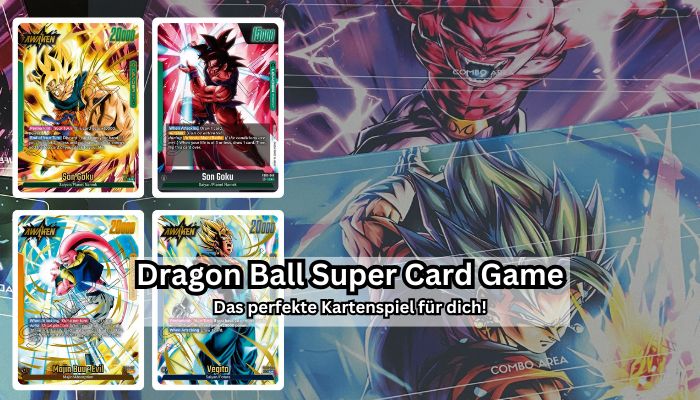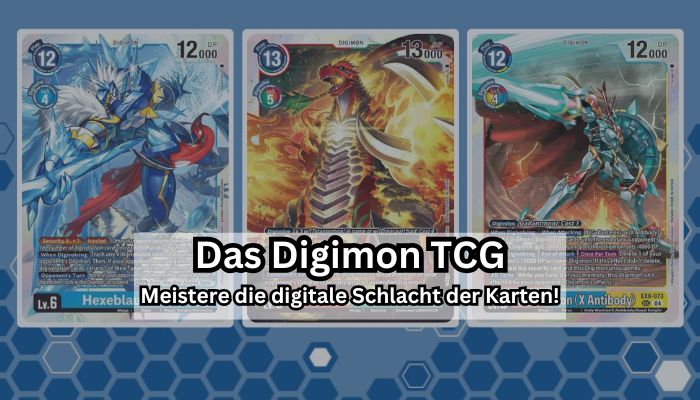The Dragon Ball Super Card Game (DBSCG) combines strategic thinking with the action of the Dragon Ball universe. While the rules are beginner-friendly, the game offers enough depth to challenge even experienced players. Let's analyze the mechanics step by step:
1. Goal of the game
Each player begins with 8 life points , represented by face-down cards in the Life Area. The goal is to reduce your opponent's life points to 0. To do this, you use your cards, plan attacks, and defend against your opponent's strategies.
What’s special about the DBSCG :
- When you lose life points, you take the corresponding card into your hand. This means that as the game progresses, you receive more resources as your life points become scarcer. This risk-reward system gives the game a unique dynamic.
2. Basic structure
a) Leader card
Your leader card represents your main character in the game.
- Starting Ability : Each leader card has special abilities that can support you in the first rounds, be it through card drawing, energy building or combat bonuses.
- Awaken Mechanics : Once you meet the awakening conditions (e.g., if you're low on life or build up enough energy), you can flip your Leader card. The awakened side is significantly stronger and brings new abilities into play.
b) Battle cards
The Battle cards are your fighters on the field. They attack the opponent, defend, or trigger effects that influence your gameplay.
- Power : Each battle card has a power value (e.g., 10,000). In battle, strength counts—the card with the higher power wins.
- Cost : Each card has an energy cost. To play it, you must provide the appropriate amount of energy.
c) Extra cards
These cards are your spells or support actions. They often have immediate effects, such as destroying opponents' cards or boosting your fighters.
d) Unison cards
A strategic highlight of the game: Unison cards are powerful supporters that act similarly to additional leader cards.
- They have their own life point mechanism (marker counter).
- Their abilities can drastically impact the game, such as removing opponent cards or boosting your attacks.
3. Phases in the game
a) Drawing phase
- Draw a card from your deck.
- Provide 1 Energy by placing a card from your hand face down in the Energy zone. Energy is the most important resource in the game—without it, you can't play any cards.
b) Energy phase
Here you decide which cards you want to use as energy. Any card can be used as energy, but be sure to play strategically. Your hand is limited, and cards you play as energy are no longer available to you in the game.
c) Game phase
During this phase, you play cards from your hand by paying their energy costs. You can choose:
- Play Battle Cards : These come into the Battle Area and can attack immediately or in later rounds.
- Activate extra cards : Use them to advance your turn or block opponents.
d) Combat phase
Now it gets exciting: You decide which of your Battle cards or your Leader card should attack.
- Choose a target: You can attack the opponent's leader to reduce life points, or target opponent's cards to remove them from play.
- Your opponent decides whether to block the attack or lose life points.
Combo system
During the combat phase, you can play cards from your hand or your Battle Area as combo cards . Each card has a combo value that increases the power of your attacking card. This makes battles dynamic and leaves room for tactical surprises.
Summary of the round mechanics
Each round follows a clearly structured process:
- Draw cards and prepare energy.
- Play cards to build your strategy.
- Attack, combine effects and fight for supremacy.
- Plan your defense against your opponent's attacks.






